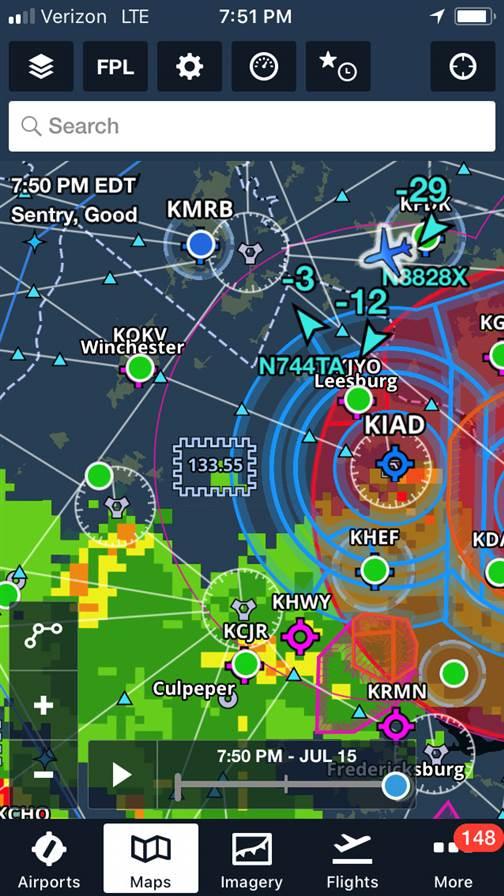
Cirrus Aircraft has been the market leader in technically advanced aircraft for nearly 20 years, and it’s tough to remember a time when the composite aircraft did not come festooned with multifunction displays, upset/recovery systems, and the latest in glass-panel technology. Yet the first generation SR20 did sport a six-pack of flight instruments and minimal automation (by today’s standards, anyway—an autopilot with altitude hold). The company transitioned to Avidyne displays in 2003 and then to Garmin in 2008.
An early generation SR20 presents an opportunity to get an aircraft designed for comfort and speed, whose composite construction, sidestick, gull-wing doors, and airframe parachute remain instantly recognizable features of all Cirrus models. The SR20’s Cirrus Airframe Parachute System consists of a parachute and rocket that, when triggered by a handle, are propelled through the skin of the aircraft. In the event of a loss of control, the pilot can deploy the chute, and the aircraft will be lowered to the ground.
A 200-horsepower Continental IO-360-ES powers the first-generation SR20, whose analog panel came with dual Garmin 430W and an ARNAV multifunction display. Handling is solid and stable in flight. The airplane’s lighter wing loading means turbulence could be a comfort issue in warm weather. The large windows make any Cirrus a bit of a hothouse on the ground, and air conditioning is not available in the SR20, so operators will usually keep the doors open during taxi and runup. The SR20 cruises at 155 knots burning about 11.6 gallons per hour at 75 percent power in standard conditions.
Email [email protected]
FOR MORE INFORMATION
Cirrus Aircraft (http://cirrusaircraft.com); Cirrus Owners and Pilots Association (www.copa.com).
Pilot Products
Sentry ADS-B
ForeFlight, uAvionix offer $500 receiver with CO detector
By Dave Hirschman
 The new Sentry Automatic Dependent Surveillance-Broadcast (ADS-B) receiver is about the size of a cigarette pack. And if someone were actually smoking in the confines of a general aviation cockpit, the Sentry’s built-in carbon monoxide detector surely would sound its alarm.
The new Sentry Automatic Dependent Surveillance-Broadcast (ADS-B) receiver is about the size of a cigarette pack. And if someone were actually smoking in the confines of a general aviation cockpit, the Sentry’s built-in carbon monoxide detector surely would sound its alarm.
Sentry is the latest collaboration between ForeFlight and uAvionix, the two firms that joined forces last year to design and market the Scout, a minimalist, $200 ADS-B receiver. The new upmarket, full-featured ADS-B In box sells for $500 and offers a 12-hour internal battery, carbon monoxide detection, synthetic vision, in-cockpit weather, and traffic information.
Sentry comes with a suction cup mount, a USB charging cable, and a padded carrying case. Pairing with an iPhone or iPad is done via WiFi and the ForeFlight app. Sentry should be mounted vertically on a side window where the pilot can see the unit’s LED lights, which turn green when it’s powered up and receiving GPS and ADS-B signals.
In flight, the dual-band receiver shows subscription-free weather and traffic. Like all GPS receivers, the traffic picture is limited unless you’re in an aircraft that actively pings the system via an ADS-B Out transponder.
A fully functioning ADS-B receiver such as Sentry vastly increases flight safety and enjoyment with the ability to identify traffic beyond visual range, monitor changing weather conditions, and avoid terrain—and Sentry’s long battery life makes it particularly useful in airplanes that don’t have USB charging outlets (or electrical systems).
Only half of ForeFlight’s current subscribers connect to ADS-B devices in flight. Tyson Weihs, ForeFlight co-founder and CEO, said that’s sure to change.
“I can’t imagine living without cellphones, and I can’t imagine flying without ADS-B,” he said. “The information they provide is just essential.”
Price: $499
Contact: http://flywithsentry.com
Email [email protected]



